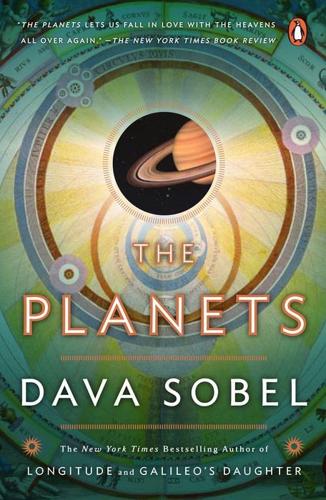
The Planets
by
Dava Sobel
Published 1 Jan 2005
.) • Penguin Books Ltd, 80 Strand, London WC2R 0RL, England • Penguin Ireland, 25 St Stephen’s Green, Dublin 2, Ireland (a division of Penguin Books Ltd) • Penguin Group (Australia), 250 Camberwell Road, Camberwell, Victoria 3124, Australia (a division of Pearson Australia Group Pty Ltd) • Penguin Books India Pvt Ltd, 11 Community Centre, Panchsheel Park, New Delhi – 110 017, India • Penguin Group (NZ), cnr Airborne and Rosedale Roads, Albany, Auckland 1310, New Zealand (a division of Pearson New Zealand Ltd) • Penguin Books (South Africa) (Pty) Ltd, 24 Sturdee Avenue, Rosebank, Johannesburg 2196, South Africa Penguin Books Ltd, Registered Offices: 80 Strand, London WC2R 0RL, England First published in the United States of America by Viking Penguin, a member of Penguin Group (USA) Inc. 2005 Published in Penguin Books 2006 Copyright © Byron Preiss Visual Publications, Inc., 2005 Illustrations copyright © Lynette R. Cook, 2006 All rights reserved Some of the ideas expressed in chapter one appeared in slightly different format in “A Reporter at Large: Among Planets” by Dava Sobel, published in The New Yorker, December 9, 1996. Parts of chapter six appeared in a “Hers” column, called “Moon Dust,” by Dava Sobel, in The New York Times Magazine, October 1, 1995. Excerpt from The Cosmic Connection: An Extraterrestrial Perspective by Carl Sagan, produced by Jerome Agel. Used with permission. Excerpt from “The Literate Farmer and the Planet Venus” from The Poetry of Robert Frost, edited by Edward Connery Lathem.
…
PENGUIN BOOKS THE PLANETS Dava Sobel, a former New York Times science reporter, is the author of Longitude, Galileo’s Daughter, and Letters to Father. In her thirty years as a science journalist, she has written for many magazines, including Audubon, Discover, Life, and The New Yorker, served as a contributing editor to Harvard Magazine and Omni, and coauthored six books, including Is Anyone Out There? with astronomer Frank Drake and The Illustrated Longitude with William J. H. Andrewes. For her efforts to increase the public understanding of science, Sobel has been awarded the National Science Board’s prestigious Individual Public Service Award, the Bradford Washburn Award from the Boston Museum of Science, and the Harrison Medal from the Worshipful Company of Clockmakers.
…
For her efforts to increase the public understanding of science, Sobel has been awarded the National Science Board’s prestigious Individual Public Service Award, the Bradford Washburn Award from the Boston Museum of Science, and the Harrison Medal from the Worshipful Company of Clockmakers. In recognition of her writing about astronomy, asteroid 30935 has been named in her honor. THE PLANETS DAVA SOBEL PENGUIN BOOKS Published by the Penguin Group Penguin Group (USA) Inc., 375 Hudson Street, New York, New York 10014, U.S.A. • Penguin Group (Canada), 90 Eglinton Avenue East, Suite 700, Toronto, Ontario, Canada M4P 2Y3 (a division of Pearson Penguin Canada Inc.) • Penguin Books Ltd, 80 Strand, London WC2R 0RL, England • Penguin Ireland, 25 St Stephen’s Green, Dublin 2, Ireland (a division of Penguin Books Ltd) • Penguin Group (Australia), 250 Camberwell Road, Camberwell, Victoria 3124, Australia (a division of Pearson Australia Group Pty Ltd) • Penguin Books India Pvt Ltd, 11 Community Centre, Panchsheel Park, New Delhi – 110 017, India • Penguin Group (NZ), cnr Airborne and Rosedale Roads, Albany, Auckland 1310, New Zealand (a division of Pearson New Zealand Ltd) • Penguin Books (South Africa) (Pty) Ltd, 24 Sturdee Avenue, Rosebank, Johannesburg 2196, South Africa Penguin Books Ltd, Registered Offices: 80 Strand, London WC2R 0RL, England First published in the United States of America by Viking Penguin, a member of Penguin Group (USA) Inc. 2005 Published in Penguin Books 2006 Copyright © Byron Preiss Visual Publications, Inc., 2005 Illustrations copyright © Lynette R.
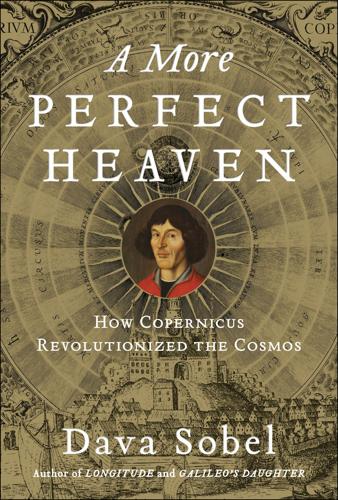
More Perfect Heaven: How Copernicus Revolutionised the Cosmos
by
Dava Sobel
Published 1 Sep 2011
Rheticus wrote to his friend Paul Eber about their discovery, and Eber in turn reported it to Melanchthon in a surviving letter of April 15, 1541. A Note on the Author Dava Sobel is the acclaimed author of the New York Times and international bestsellers Longitude, Galileo’s Daughter, and The Planets, and the coauthor of The Illustrated Longitude. She lives in East Hampton, New York. Also by Dava Sobel Longitude The Illustrated Longitude (with William J. H. Andrewes) Galileo’s Daughter The Planets Letters to Father (translated and annotated) Copyright © 2011 by Dava Sobel All rights reserved. No part of this book may be used or reproduced in any manner whatsoever without written permission from the publisher except in the case of brief quotations embodied in critical articles or reviews.
…
A More PERFECT HEAVEN How Copernicus Revolutionized the Cosmos DAVA SOBEL Contents Cover Title Page Decdication “To the Reader, Concerning … This Work” Part One • Prelude Chapter 1 Moral, Rustic, and Amorous Epistles Chapter 2 The Brief Sketch Chapter 3 Leases of Abandoned Farmsteads Chapter 4 On the Method of Minting Money Chapter 5 The Letter Against Werner Chapter 6 The Bread Tariff Part Two • Interplay “And the Sun Stood Still”. ACT I “And the Sun Stood Still”. ACT II Part Three • Aftermath Chapter 7 The First Account Chapter 8 On the Revolutions of the Heavenly Spheres Chapter 9 The Basel Edition Chapter 10 Epitome of Copernican Astronomy Chapter 11 Dialogue Concerning the Two Chief Systems of the World, Ptolemaic and Copernican Chapter 12 An Annotated Census of Copernicus’ De Revolutionibus Thanksgiving Copernican Chronology Notes on the Quotations Illustration Credits Maps Bibliography Footnotes A Note on the Author Also by Dava Sobel Imprint To my fair nieces, AMANDA SOBEL and CHIARA PEACOCK, with love in the Copernican tradition of nepotism.
…
ACT II Part Three • Aftermath Chapter 7 The First Account Chapter 8 On the Revolutions of the Heavenly Spheres Chapter 9 The Basel Edition Chapter 10 Epitome of Copernican Astronomy Chapter 11 Dialogue Concerning the Two Chief Systems of the World, Ptolemaic and Copernican Chapter 12 An Annotated Census of Copernicus’ De Revolutionibus Thanksgiving Copernican Chronology Notes on the Quotations Illustration Credits Maps Bibliography Footnotes A Note on the Author Also by Dava Sobel Imprint To my fair nieces, AMANDA SOBEL and CHIARA PEACOCK, with love in the Copernican tradition of nepotism. “To the Reader, Concerning … This Work” Since 1973, when the five hundredth anniversary of his birth brought his unique story to my attention, I have wanted to dramatize the unlikely meeting between Nicolaus Copernicus and the uninvited visitor who convinced him to publish his crazy idea.
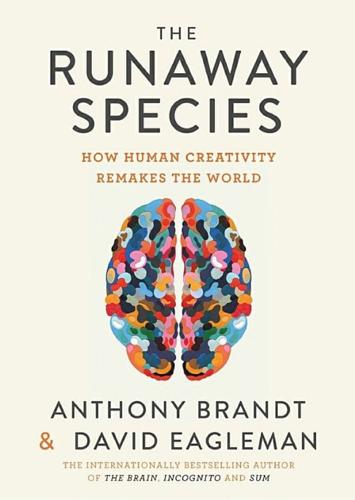
The Runaway Species: How Human Creativity Remakes the World
by
David Eagleman
and
Anthony Brandt
Published 30 Sep 2017
It was developed by John Ellman and Michael Pavia, and builds on the work of earlier pioneers in combinatorial chemistry. 6 Thomas A. Edison, “The Phonograph and Its Future,” Scientific American 5, no. 124 (1878): 1973-4, <http://dx.doi.org/10.1038/scientificamerican05181878-1973supp> 7 Dava Sobel, Longitude: The True Story of a Lone Genius Who Solved the Greatest Scientific Problem of His Time (New York: Walker, 1995). 8 Dava Sobel, Longitude. 9 Unfortunately, Harrison never received his due. To test whether Harrison’s elaborate design could be manufactured by others, the Board of Longitude commissioned another watchmaker named Larcum Kendall to make a copy.
…
It was developed by John Ellman and Michael Pavia, and builds on the work of earlier pioneers in combinatorial chemistry. 6 Thomas A. Edison, “The Phonograph and Its Future,” Scientific American 5, no. 124 (1878): 1973-4, <http://dx.doi.org/10.1038/scientificamerican05181878-1973supp> 7 Dava Sobel, Longitude: The True Story of a Lone Genius Who Solved the Greatest Scientific Problem of His Time (New York: Walker, 1995). 8 Dava Sobel, Longitude. 9 Unfortunately, Harrison never received his due. To test whether Harrison’s elaborate design could be manufactured by others, the Board of Longitude commissioned another watchmaker named Larcum Kendall to make a copy.
…
These crude approximations often led to disaster, as frigates wandered way off course. Faced with continued losses in their fleet, Parliament made a bold decision to inspire people to look beyond the usual solutions: it announced a prize of £20,000 (the equivalent of $1 million in today’s money) for anyone who devised a way to accurately measure longitude. As science historian Dava Sobel writes, “This power over purse strings made the Board of Longitude perhaps the world’s first official research-and-development agency.”8 The early results were not promising. The Board of Longitude evaluated proposals for a diverse array of devices with fanciful names like phonometers, pyrometers, selenometers and heliometers.
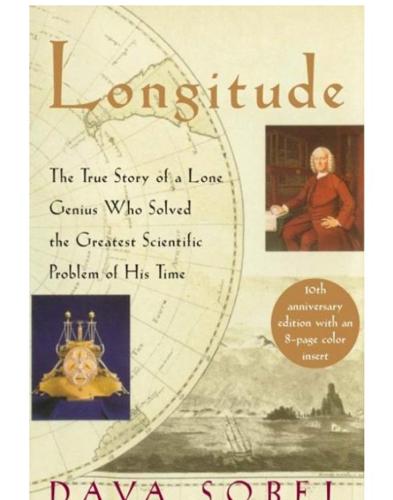
Longitude
by
Dava Sobel
Published 1 Jan 1995
LONGITUDE The True Story of a Lone Genius Who Solved the Greatest Scientific Problem of His Time DAVA SOBEL Contents 1. Imaginary Lines 2. The Sea Before Time 3. Adrift in a Clockwork Universe 4. Time in a Bottle 5. Powder of Sympathy 6. The Prize 7. Cogmaker’s Journal 8. The Grasshopper Goes to Sea 9. Hands on Heaven’s Clock 10. The Diamond Timekeeper 11. Trial by Fire and Water 12. A Tale of Two Portraits 13. The Second Voyage of Captain James Cook 14. The Mass Production of Genius 15. In the Meridian Courtyard Acknowledgments Sources For my mother, Betty Gruber Sobel, a four-star navigator who can sail by the heavens but always drives by way of Canarsie. 1.
…
Wakefield, England: Wakefield Historical Publications, 1984. Williams, J. E. D. From Sails to Satellites: The Origin and Development of Navigational Science. Oxford, England: Oxford University Press, 1992. Wood, Peter H. “La Salle: Discovery of a Lost Explorer,” in American Historical Review, Vol. 89 (1984) pp. 294-323. Copyright © 1995 by Dava Sobel All rights reserved. No part of this book may be reproduced or transmitted in any form or by any means, electronic or mechanical, including photocopying, recording, or by any information storage and retrieval system, without permission in writing from the Publisher. First published in the United States of America in 1995 by Walker Publishing Company, Inc.
…
First published in the United States of America in 1995 by Walker Publishing Company, Inc. Published simultaneously in Canada by Thomas Allen & Son Canada, Limited, Markham, Ontario Library of Congress Cataloging-in-Publication Data Sobel, Dava. Longitude : the true story of a lone genius who solved the greatest scientific problem of his time / Dava Sobel. p. cm. Includes bibliographical references. eISBN: 978-0-802-77943-4 1. Longitude—Measurement—History. 2. Harrison, John. 1693-1776. 3. Clock and watch makers—Great Britain—Biography. I. Title. QB225.S64 1995 526’.62’09—dc20 95-17402 CIP Illustration of H-4 on title page spread used by permission of the National Maritime Museum, London.
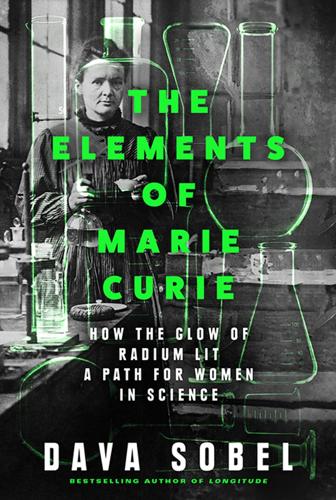
The Elements of Marie Curie
by
Dava Sobel
Published 20 Aug 2024
R., 248, 280 Wojciechowski, Stanislaw, 207 Women’s Social and Political Union, 128–29 Wood, Robert W., 142 World War I, 148, 151–60, 161–70, 171, 174, 272 World War II, 260–61, 262–63, 269, 271 X–rays general, 35–37 medical uses, 152–53, 155–63, 166–70, 172, 238–39 Nobel Prize for research on, 54–55 radiology courses, 166–67, 168, 172 uranic ray comparison, 70 Yamada, Nobuo, 198–99, 218, 223–24 Yovanovitch, Dragolijub, 196, 198, 214 Zeeman, Pieter, 246, 265 Zorawski family, 9–11 About the Author DAVA SOBEL is the author of the international bestseller Longitude, the bestselling Pulitzer Prize finalist Galileo’s Daughter, The Planets, A More Perfect Heaven, And the Sun Stood Still and The Glass Universe. A former New York Times science reporter and current editor of the Meter poetry column in Scientific American, she lives on Long Island. Also by Dava Sobel The Glass Universe: How the Ladies of the Harvard Observatory Took the Measure of the Stars And the Sun Stood Still: A Play A More Perfect Heaven: How Copernicus Revolutionized the Cosmos The Planets Letters to Father: Suor Maria Celeste to Galileo, 1623–1633 (translated by Dava Sobel) Galileo’s Daughter: A Historical Memoir of Science, Faith, and Love The Illustrated Longitude (with William J.
…
THE ELEMENTS OF MARIE CURIE HOW THE GLOW OF RADIUM LIT A PATH FOR WOMEN IN SCIENCE Dava Sobel Copyright 4th Estate An imprint of HarperCollinsPublishers 1 London Bridge Street London SE1 9GF www.4thEstate.co.uk HarperCollinsPublishers Macken House 39/40 Mayor Street Upper Dublin 1 D01 C9W8 Ireland This eBook first published in Great Britain by 4th Estate in 2024 Copyright © John Harrison & Daughter, Ltd. 2024 Cover images © Getty Images Excerpt(s) from Periodic Table by Primo Levi, translated by Raymond Rosenthal, translation copyright © 1984 by Penguin Random House LLC.
…
THE ELEMENTS OF MARIE CURIE HOW THE GLOW OF RADIUM LIT A PATH FOR WOMEN IN SCIENCE Dava Sobel Copyright 4th Estate An imprint of HarperCollinsPublishers 1 London Bridge Street London SE1 9GF www.4thEstate.co.uk HarperCollinsPublishers Macken House 39/40 Mayor Street Upper Dublin 1 D01 C9W8 Ireland This eBook first published in Great Britain by 4th Estate in 2024 Copyright © John Harrison & Daughter, Ltd. 2024 Cover images © Getty Images Excerpt(s) from Periodic Table by Primo Levi, translated by Raymond Rosenthal, translation copyright © 1984 by Penguin Random House LLC. Used by permission of Schocken Books, an imprint of the Knopf Doubleday Publishing Group, a division of Penguin Random House LLC. All rights reserved. Dava Sobel asserts the moral right to be identified as the author of this work A catalogue record for this book is available from the British Library Information on previously published material appears here. All rights reserved under International and Pan-American Copyright Conventions. By payment of the required fees, you have been granted the non-exclusive, non-transferable right to access and read the text of this e-book on-screen. No part of this text may be reproduced, transmitted, down-loaded, decompiled, reverse engineered, or stored in or introduced into any information storage and retrieval system, in any form or by any means, whether electronic or mechanical, now known or hereinafter invented, without the express written permission of HarperCollins Source ISBN: 9780008536916 Ebook Edition © October 2024 ISBN: 9780008536930 Version: 2024-08-20 Dedication To Harry Arthur Kobrin and Van Samuel Hix, two future feminists Contents Cover Title Page Copyright Dedication Preface.
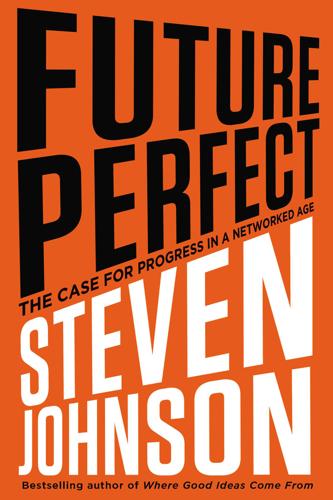
Future Perfect: The Case for Progress in a Networked Age
by
Steven Johnson
Published 14 Jul 2012
That diversity meant that the society was more likely to detect important problems that a more unified or specialized group might have missed. Once a premium had been established—and the reward publicly announced—the prize money created a much larger pool of minds working on the problem. John Harrison’s story, powerfully recounted in Dava Sobel’s bestselling Longitude, demonstrates how a prize-backed challenge extends and diversifies the network of potential solutions. Born in West Yorkshire, Harrison was the son of a carpenter, with almost no formal education, and notoriously poor writing skills. When he began working on his first iteration of the chronometer, his social connections to the elites of London were nonexistent.
…
On the innovation threat posed by intellectual property restrictions, see Lawrence Lessig’s The Future of Ideas, and my own Where Good Ideas Come From. Ayn Rand’s views on patents come from an essay, “Patents and Copyrights,” included in the collection Capitalism: The Unknown Ideal. John Harrison’s story is told in Dava Sobel’s popular Longitude: The True Story of a Lone Genius Who Solved the Greatest Scientific Problem of His Time. Beth Noveck’s inspirational work with crowdsourced patent review, dubbed “peer to patent,” is described in her WikiGovernment. For more on Jon Schnur and the origin and implementation of the Race to the Top program, see Steve Brill’s entertaining Class Warfare: Inside the Fight to Fix America’s Schools.
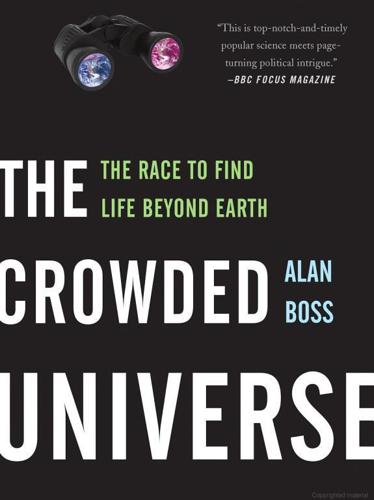
The Crowded Universe: The Search for Living Planets
by
Alan Boss
Published 3 Feb 2009
Let them waste their time on this Gordian knot. The IAU Executive Committee mulled over the Working Group’s final report for a few months and then, in April 2006, decided to appoint a new committee to waste its time in trying to seek a consensus definition. This time the committee was small: just five astronomers, popular science writer Dava Sobel, and the chair, astronomy historian Owen Gingrich of the Harvard-Smithsonsian Center for Astrophysics. Iwan Williams agreed to work again on this impossible task. The new Planet Definition Committee went to work, knowing that they had to come up with something in time for the upcoming IAU General Assembly in Prague.
…
The new Planet Definition Committee went to work, knowing that they had to come up with something in time for the upcoming IAU General Assembly in Prague. After meeting at the Paris Observatory on June 30-31, the seven-member group quickly decided on a definition they could all support: Stern’s roundness definition. They introduced their proposed resolution at the IAU’s Prague meeting on August 16, accompanied by an article by Dava Sobel published in the Washington Post that same day, buttressing their case. Clearly they had planned the release of their decision well ahead of time and had gathered supporters, such as Neil deGrasse Tyson, director of the Hayden Planetarium in New York City, who applauded their decision. Richard Binzel, an MIT planetary scientist who was one of the Magnificent Seven on the Planet Definition Committee, predicted that their proposal would be approved by a wide margin in Prague.
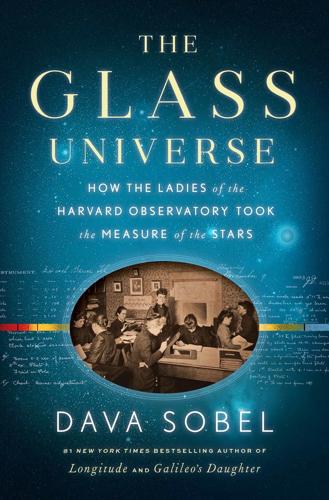
The Glass Universe: How the Ladies of the Harvard Observatory Took the Measure of the Stars
by
Dava Sobel
Published 6 Dec 2016
Also by Dava Sobel Longitude Galileo’s Daughter Letters to Father The Planets A More Perfect Heaven And the Sun Stood Still (a play) VIKING An imprint of Penguin Random House LLC 375 Hudson Street New York, New York 10014 penguin.com Copyright © 2016 by John Harrison and Daughter, Ltd. Penguin supports copyright. Copyright fuels creativity, encourages diverse voices,promotes free speech, and creates a vibrant culture. Thank you for buying an authorized edition of this book and for complying with copyright laws by not reproducing, scanning, or distributing any part of it in any form without permission.
…
Here: Courtesy of Carbon County Museum, Rawlins, Wyoming Here: UAV 630.271 (E4116), Harvard University Archives Here: Courtesy of Harvard College Observatory Here: Schlesinger Library, Radcliffe Institute, Harvard University; here: Courtesy of Hastings Historical Society, New York Here: Courtesy of Harvard College Observatory; here: Lindsay Smith, used with permission Here: HUGFP 125.82p, Box 2, Harvard University Archives; here: Special Collections Research Center, University of Chicago Library Here: HUPSF Observatory (14), olvwork360662, Harvard University Archives; pages here: UAV 630.271 (391), olvwork432043, Harvard University Archives Here: Courtesy of Harvard College Observatory Here: HUGFP 125.82p, Box 2, Harvard University Archives; here: Courtesy of Harvard College Observatory Here: HUGFP 125.36 F, Box 1, Harvard University Archives; here: HUGFP 125.36 F, Box 1, Harvard University Archives Here and here: Courtesy of Katherine Haramundanis Here: Courtesy of the Harvard University Archives; here: Courtesy of Charles Reynes Here: Chart 1, Volume 105, Harvard College Observatory Annals Here: Courtesy of Hastings Historical Society, New York; here: Courtesy of Katherine Haramundanis Here: Lia Halloran, used with permission; here: Richard E. Schmidt, used with permission Library of Congress Cataloging-in-Publication Data Names: Sobel, Dava. Title: The glass universe : how the ladies of the Harvard Observatory took the measure of the stars / Dava Sobel. Description: New York : Viking, 2016. | Includes bibliographical references and index. Identifiers: LCCN 2016029496 (print) | LCCN 2016030208 (e-book) | ISBN 9780670016952 (hardcover) | ISBN 9780698148697 (e-book) Subjects: LCSH: Women in astronomy—Massachusetts—History. | Women mathematicians—Massachusetts—History. | Astronomy—History—19th century. | Astronomy—History—20th century. | Harvard College Observatory.
…
Classification: LCC QB34.5 .S63 2016 (print) | LCC QB34.5 (ebook) | DDC 522/.19744409252—dc23 LC record available at https://lccn.loc.gov/2016029496 Printed in the United States of America Version_1 To the ladies who sustain me: Diane Ackerman, Jane Allen, KC Cole, Mary Giaquinto, Sara James, Joanne Julian, Zoë Klein, Celia Michaels, Lois Morris, Chiara Peacock, Sarah Pillow, Rita Reiswig, Lydia Salant, Amanda Sobel, Margaret Thompson, and Wendy Zomparelli, with love and thanks CONTENTS Also by Dava Sobel Title Page Copyright Dedication Preface PART ONE The Colors of Starlight CHAPTER ONE Mrs. Draper’s Intent CHAPTER TWO What Miss Maury Saw CHAPTER THREE Miss Bruce’s Largesse CHAPTER FOUR Stella Nova CHAPTER FIVE Bailey’s Pictures from Peru PART TWO Oh, Be A Fine Girl, Kiss Me!
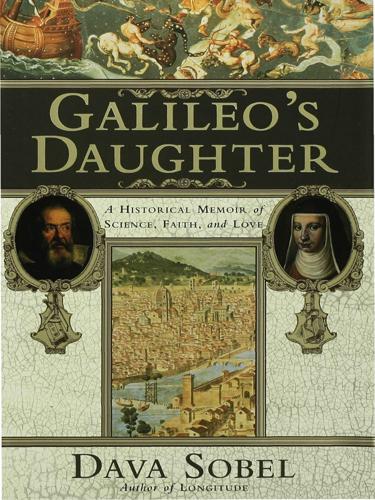
Galileo's Daughter: A Historical Memoir of Science, Faith and Love
by
Dava Sobel
Published 25 May 2009
The translation of Galileo’s daughter’s letters from the original Italian are the author’s own. Copyright © 1999 by Dava Sobel All rights reserved. No part of this book may be reproduced or transmitted in any form or by any means, electronic or mechanical, including photocopying, recording, or by any information storage and retrieval system, without permission in writing from the Publisher. First published in the United States of America in 1999 by Walker Publishing Company, Inc. Library of Congress Cataloging-in-Publication Data Sobel, Dava. Galileo’s daughter: a historical memoir of science, faith, and love/Dava Sobel. p. cm. Includes bibliographical references.
…
DAVA SOBEL GALILEO’S DAUGHTER A Historical Memoir of Science, faith, and love CONTENTS PART ONE. TO FLORENCE [I] She who was so precious to you [II] This grand book the universe [III] Bright stars speak of your virtues [IV] To have the truth seen and recognized [V] In the very face of the sun [VI] Observant executrix of God’s commands [VII] The malice of my persecutors [VIII] Conjecture here among shadows PART TWO. ON BELLOSGUARDO [IX] How our father is favored [X] To busy myself in your service [XI] What we require above all else [XII] Because of our zeal [XIII] Through my memory of their eloquence [XIV] A small and trifling body [XV] On the right path, by the grace of god [XVI] The tempest of our many torments PART THREE.

Adapt: Why Success Always Starts With Failure
by
Tim Harford
Published 1 Jun 2011
Chapter Seven: Sandie Kanthal and Peter Higginson. Chapter Eight: Richard Wiseman. Although I did not interview them for this book, at certain points I drew heavily on the writing or broadcasting of the following people: Loren Graham, Thomas Ricks, David Cloud, Greg Jaffe, George Packer, Leo McKinstry, Dava Sobel, Ian Parker, Sebastian Mallaby, Andrew Ross Sorkin, Jennifer Hughes, Gary Hamel, Peter Day, Michael Buerk, Twyla Tharp and Kathryn Schulz. I am indebted. I am also indebted for excellent research assistance to Elizabeth Baldwin, Kelly Chen, Bob Denham and Cosmina Dorobanu. My editors, Eric Chinski, Iain Hunt, Tim Rostron and Tim Whiting have been very supportive.
…
See Gautam Naik, ‘R&D spending in U.S. expected to rebound’, wsj.com, 21 December 2009, sec. Economy, http://online.wsj.com/article/SB10001424052748703344704574610350092009062.html 104 ‘Firms are reluctant to risk their money’: McKinstry, Spitfire, pp. 34–5. 105 There is an inconvenient tale behind this: I have drawn much of this account from Dava Sobel’s Longitude (London: Fourth Estate, 1996). 106 Compared with the typical wage of the day: Officer, ‘Purchasing power of British pounds’, cited above, n. 10. 107 In 1810 Nicolas Appert: http://en.wikipedia.org/wiki/Nicolas_Appert 107 Ultimately the Académie began to turn down: Maurice Crosland, ‘From prizes to grants in the support of scientific research in France in the nineteenth century: The Montyon legacy’, Minerva, 17(3) (1979), pp. 355–80, and Robin Hanson, ‘Patterns of patronage: why grants won over prizes in science’, University of California, Berkeley, working paper 1998, http://hanson.gmu.edu/whygrant.pdf 108 Innovation prizes were firmly supplanted: Hanson, ‘Patterns of patronage’. 109 The prize was eventually awarded in September 2009: a follow-up prize was announced and then cancelled following a lawsuit over privacy.
…
The cheap, easy-to-build and effective Hurricanes did indeed outnumber Spitfires in the early months of the war, but it was the Spitfire’s design that won the plaudits. * The Board of Longitude never gave Harrison his prize, but it did give him some development money. The British parliament, after Harrison petitioned the King himself, also awarded the inventor a substantial purse in lieu of the prize that never came. The sad story is superbly told by Dava Sobel in her book Longitude, although Sobel perhaps gives Harrison too much credit in one respect: it is arguable that by producing a seaworthy clock, albeit a masterpiece, he did not solve the longitude problem for the Royal Navy or society as a whole. To do that, he needed to produce a blueprint that a skilled craftsman could use to produce copies of the clock
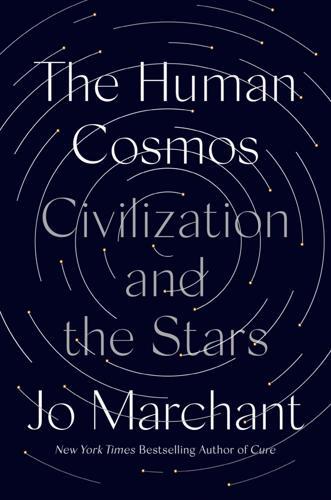
The Human Cosmos: A Secret History of the Stars
by
Jo Marchant
Published 15 Jan 2020
Age of Discovery: David Barrie, Sextant: A Voyage Guided by the Stars and the Men Who Mapped the World’s Oceans (Glasgow, UK: William Collins, 2014); Ben Finney, “Nautical Cartography and Traditional Navigation in Oceania,” in The History of Cartography, vol. 2, book 3, ed. David Woodward and Malcolm Lewis (Chicago: University of Chicago Press, 1998), 443–92. device he called H4: David Landes, Revolution in Time, 145–57. popularized in Dava Sobel’s: Dava Sobel, Longitude: The True Story of a Lone Genius Who Solved the Greatest Scientific Problem of His Time (New York: Walker & Co., 1995). measure a planet’s parallax: Edmund Halley, “A New Method of Determining the Parallax of the Sun,” Philosophical Transactions 29 (1716): 454; Michael Chauvin, “Astronomy in the Sandwich Islands: The 1874 Transit of Venus,” The Hawaiian Journal of History 27 (1993): 185–225.
…
As the start of Cook’s first Pacific voyage neared, however, both approaches—clocks and astronomy—were finally on the verge of becoming practical. In 1759, after more than thirty years’ experimentation, the Yorkshire carpenter John Harrison came up with a device he called H4: a small clock, or chronometer, that could keep time on a ship (a story popularized in Dava Sobel’s 1995 best-seller Longitude). With the newly invented sextant, which allowed more accurate measurements of altitude at sea than ever before, navigators could compare local time at noon with the time back home. But the H4 was still being tested and argued over when Cook set sail in 1768. To find Tahiti, he relied instead on the Moon.
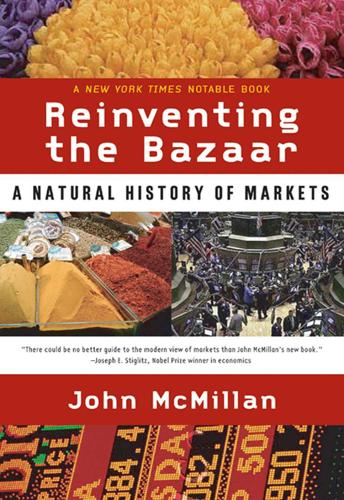
Reinventing the Bazaar: A Natural History of Markets
by
John McMillan
Published 1 Jan 2002
Patented drugs would no longer be overpriced. With the technology freely available to all, the market would be competitive and the price would be driven down to manufacturing cost. An early precedent for a buyout is the prize the British Parliament offered in the eighteenth century for a method of determining longitude, as chronicled by Dava Sobel in her absorbing book Longitude. Untold lives had been lost in shipwrecks caused by navigation errors, so the prize offered was a rich £20,000. A host of inventors submitted ideas, most of them hare-brained. The problem of measuring longitude accurately was solved by a humble clockmaker, John Harrison, with his invention of the chronometer.
…
Could a buyout mechanism be as successful in generating innovation in pharmaceuticals as it was in begetting the chronometer? With the design of the market, as always, the devil is in the details. Two difficulties must be resolved. The promise to pay must be credible. Following the invention of the chronometer, according to Dava Sobel, the British government balked at paying Harrison the £20,000 prize, raising spurious objections. Harrison struggled the rest of his life for acknowledgment, receiving the full money he was due only after forty years. Buying out a newly developed drug would mean paying many millions of dollars to an already highly profitable pharmaceutical company.
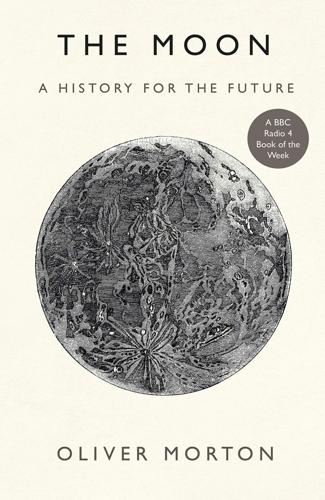
The Moon: A History for the Future
by
Oliver Morton
Published 1 May 2019
In the LM, before he walks out into the dust, Buzz Aldrin takes Communion with bread and wine consecrated on another planet. “‘I am the vine’,” he says, “‘You are the branches. Whosoever abides in me will bring forth much fruit. Apart from me you can do nothing.’” It is not the only lunar sacrament. In her book “The Planets” (2005), Dava Sobel recalls hearing that her friend Carolyn, on being presented with a speck of moondust by a planetary scientist boyfriend, impulsively ate it. The Apollo astronauts ingest it without choosing to. In their dust-dirtied LM tiny particles move through the alveoli of their lungs and across the microvilli of their guts into their blood, tissues and cells.
…
There are terrific Bonestell Moon illustrations in Richardson (1961), which gives a very good sense of pre-Apollo understanding of the Moon. For the LM, see Kelly (2001) and Riley (2009); for spacesuits, see the magnificent and many-layered De Monchaux (2011) and also St Clair (2018); for simulation, see Mindell (2008). For black astronauts, see Logsdon (2014). Dava Sobel’s friend’s lunophagy is in Sobel (2005). Buzz Aldrin’s Communion is in Chaikin (1995). CHAPTER IV The political and social context of the Apollo and early-post-Apollo years is dealt with thoughtfully in Maher (2015). For an introduction to the Anthropocene and debates over its timing, see Lewis and Maslin (2018), and for a consideration of its impact on the humanities, see Chakrabarty (2009).
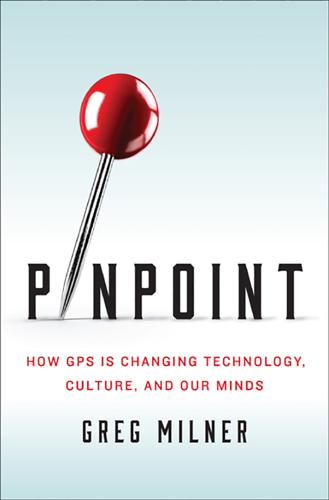
Pinpoint: How GPS Is Changing Our World
by
Greg Milner
Published 4 May 2016
Having tested it against the lunar distance method for calculating longitude, Cook offered rave reviews of the chronometer when he returned to England in July 1775, calling it “our trusty friend” and “our never failing guide.” The chronometer soon became standard. The longitude problem was solved. The significance of the chronometer cannot be overstated. Its effect on the world rivals that of any other invention, including the printing press and the microchip. Dava Sobel, in her definitive history of Harrison’s creation, Longitude, notes (without endorsing) the theory that the chronometer “facilitated England’s mastery over the oceans and thereby led to the creation of the British Empire, for it was by dint of the chronometer . . . that Britannia ruled the waves.”
…
Chapter 2: The When and the Where 24 the transit of Venus: Steven Cherry, Transit of Venus: The Other Half of the Longitude Story, Techwise Conversations, n.d., http://spectrum.ieee.org/podcast/geek-life/profiles/transit-of-venus-the-other-half-of-the-longitude-story. 26 “discovering the longitude”: Dava Sobel, Longitude: The True Story of a Lone Genius Who Solved the Greatest Scientific Problem of His Time (New York: Walker and Co., 1995), 56. 27 In 1800, Chevalier de Lamarck: Walter Sullivan, “The IGY—Scientific Alliance In a Divided World,” Bulletin of the Atomic Scientists 14, no. 2 (February 1958): 68–72. 28 first international organization: Ibid., 68. 28 “the largest organized intellectual enterprise”: John A.
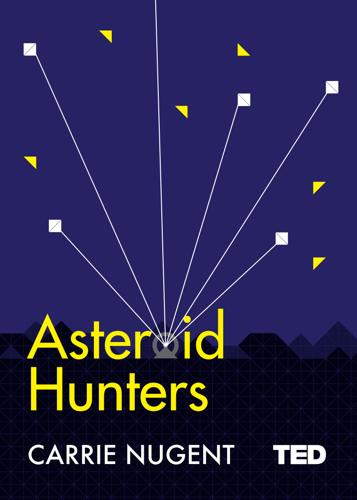
Asteroid Hunters (TED Books)
by
Carrie Nugent
Published 14 Mar 2017
But pressure from the other astronomers was mounting (Rule #2: “Share your observations”). Everyone was itching to see this new planet for themselves. Not everyone was being nice about it. Britain’s Astronomer Royal, Nevil Maskelyne, has been remembered by history as a bit of a jerk. (If you have read Dava Sobel’s Longitude, you may remember Maskelyne as John Harrison’s nemesis). At this time, he wrote a particularly nasty passage: “There is great astronomical news: Mr. Piazzi, Astronomer to the King of the two Sicilies, at Palermo, discovered a new planet the beginning of this year, and was so covetous as to keep this delicious morsel to himself for six weeks; when he was punished for his illiberality by a fit of sickness . . .”

Accessory to War: The Unspoken Alliance Between Astrophysics and the Military
by
Neil Degrasse Tyson
and
Avis Lang
Published 10 Sep 2018
Hard to say for sure.23 Hipparchus’s 360-degree system of latitude and longitude, and the calculations it made possible, gave a big boost to the sciences of geography, cartography, and astronomy. The terms “latitude” and “longitude” derive from the Greek for “breadth” and “length,” respectively, denoting a binary directionality in early maps of the known world. But the difference between the two goes very deep. The American historian Dava Sobel describes it this way: The zero-degree parallel of latitude is fixed by the laws of nature, while the zero-degree meridian of longitude shifts like the sands of time. This difference makes finding latitude child’s play, and turns the determination of longitude, especially at sea, into an adult dilemma—one that stumped the wisest minds of the world for the better part of human history.24 Though Polaris was not yet in place to serve as a convenient North Star, the Greeks understood that if the same star or stars barely skimmed the horizon in two different cities, those cities lay at the same latitude.
…
Having faced these difficulties in 1764 when trying to observe Jupiter’s satellites at sea, Reverend Nevil Maskelyne, author of the British Mariner’s Guide and the first Nautical Almanac, opined, “I am afraid the complete Management of a Telescope on Shipboard will always remain among the Desiderata.”67 Surely a reliable portable timepiece would be a better solution. It would “enabl[e] mariners,” writes Dava Sobel, “to carry the home-port time with them, like a barrel of water or a side of beef.” The rub was reliability. In 1500, even a fine clock sitting firmly on solid ground would generally accumulate an error of ten or fifteen minutes with each passing day. But that didn’t faze Regnier Gemma Frisius, a Dutch mathematician who proposed that a good clock, set to the exact moment a ship left the dock, could serve as a stable point of comparison for the local time as ascertained at sea by Sun, star, or other means—assuming that the clock’s exactness could be preserved despite the moisture, cold, heat, salt, gravity, and tumult.68 Quite a task.
…
In fact, only by going south of the equator can one see the Sun in such a position, so the very assertion Herodotus rejects is the one that best argues for the journey’s actually having taken place. See discussion of Necho’s seventh-century BC and Carthaginian king Hanno’s fifth-century BC voyages in Casson, Ancient Mariners, 116–24. 24.Dava Sobel, Longitude: The True Story of a Lone Genius Who Solved the Greatest Scientific Problem of His Time (New York: Walker, 2005), 4. 25.Taylor, Haven-Finding Art, 12–13; Williams, Sails to Satellites, 8–9; Tibbetts, Arab Navigation, 129–32, 314; B. Arunachalam, “Traditional Sea and Sky Wisdom of Indian Seamen and Their Practical Applications,” in Tradition and Archaeology: Early Maritime Contacts in the Indian Ocean, ed.
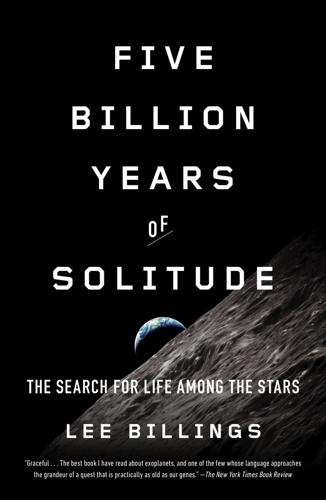
Five Billion Years of Solitude: The Search for Life Among the Stars
by
Lee Billings
Published 2 Oct 2013
I owe the following sources many thanks for their time and expertise: Roger Angel, Guillem Anglada-Escudé, Mike Arthur, William Bains, Natalie Batalha, Charles Beichman, David Bennett, Michael Bolte, Xavier Bonfils, Alan Boss, John Casani, Webster Cash, John Chambers, Phil Chang, David Charbonneau, Nick Cowan, Paul Davies, Drake Deming, Frank Drake, Alan Dressler, Michael Endl, Debra Fischer, Kathryn Flanagan, Eric Ford, Colin Goldblatt, Mark Goughan, Jeff Greason, John Grunsfeld, Javiera Guedes, Olivier Guyon, Robin Hanson, Tori Hoehler, Andrew Howard, Jeremy Kasdin, Jim and Sharon Kasting, Heather Knutson, Antoine Labeyrie, David Latham, Greg Laughlin, Doug Lin, Jonathan Lunine, Kevin McCartney, Claudio Maccone, Bruce Macintosh, Geoff Marcy, John Mather, Greg Matloff, Michel Mayor, Vikki Meadows, Jon Morse, Matt Mountain, Phil Nutzman, Ben Oppenheimer, Bob Owen, Ron Polidan, Marc Postman, Sean Raymond, Dimitar Sasselov, Jean Schneider, Sara Seager, Michael Shao, Seth Shostak, Rudy Slingerland, Chris Smith, Rémi Soummer, David Spergel, Alan Stern, Peter Stockman, Jill Tarter, Philippe Thébault, Wes Traub, Michael Turner, Stéphane Udry, Steve Vogt, Jim Walker, Bernie Walp, Andrew Youdin, and Kevin Zahnle. CHAPTER 1: Looking for Longevity Ronald N. Bracewell, The Galactic Club: Intelligent Life in Outer Space (San Francisco: W. H. Freeman, 1974). Giuseppe Cocconi and Philip Morrison, “Searching for Interstellar Communications,” Nature, vol. 184 (1959), pp. 844–46. Frank Drake and Dava Sobel, Is Anyone Out There? The Scientific Search for Extraterrestrial Intelligence (New York: Delacorte Press, 1992). I quote Drake from page 27. Stanislaw Lem, Summa Technologiae (Minneapolis: University of Minnesota Press, 2013; first edition, 1964). Translated by Joanna Zylinska, this is the first complete English translation of Lem’s prescient classic on cosmic evolution.
…
Paul Davies, The Eerie Silence: Renewing Our Search for Alien Intelligence (New York: Houghton Mifflin Harcourt, 2010). Frank Drake, “Stars as Gravitational Lenses,” in Bioastronomy—The Next Steps, G. Marx, ed., Astrophysics and Space Science Library, vol. 144 (Dordrecht: Kluwer Academic Publishers, 1988), pp. 391–94. Frank Drake and Dava Sobel, Is Anyone Out There? The Scientific Search for Extraterrestrial Intelligence (New York: Delacorte Press, 1992). Drake’s calculation of how many boxes of corn flakes the Arecibo Observatory radio dish could hold appears on pages 73–74. Von R. Eshleman, “Gravitational Lens of the Sun: Its Potential for Observations and Communications Over Interstellar Distances,” Science, vol. 205 (1979), pp. 1133–35.
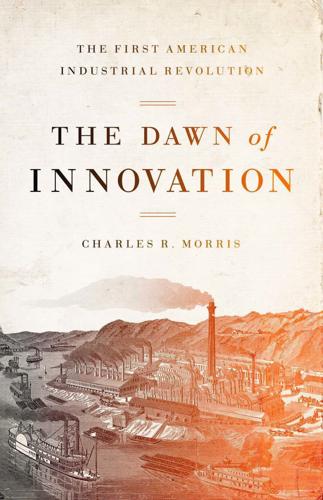
The Dawn of Innovation: The First American Industrial Revolution
by
Charles R. Morris
Published 1 Jan 2012
Barraclough, Steelmaking Before Bessemer, vol. 2: Crucible Steel (London: The Metals Society, 1984), 102. 11 David S. Landes, The Wealth and Poverty of Nations (New York: Norton, 1998), 215–220. 12 N. A. M. Rodger, Command of the Sea: A Naval History of Britain, 1649–1815 (New York: W. W. Norton, 2005), 172. 13 Dava Sobel, Longitude: The True Story of a Lone Genius Who Solved the Greatest Scientific Mystery of His Time (New York: Penguin Books, 1995); David S. Landes, Revolution in Time (Cambridge, MA: Harvard University Press, 1983), 145–170. 14 K. R. Gilbert, “Machine-Tools,” in Singer, ed., The Industrial Revolution, 417–441; K.
…
Great Britain made the shift to coke roughly a century before the rest of Europe and the United States. In part because of its greater heat potential, coke is the superior fuel for large-scale processing, so all serious competitor countries were eventually forced to follow the British lead. l Dava Sobel’s best-selling Longitude may be too hard on the astronomers. They certainly rallied against Harrison’s solutions, and several may have been motivated by personal animus toward Harrison (who was easy to dislike). But one could fairly argue that his clocks were not a true solution, despite their clear qualification under the rules.
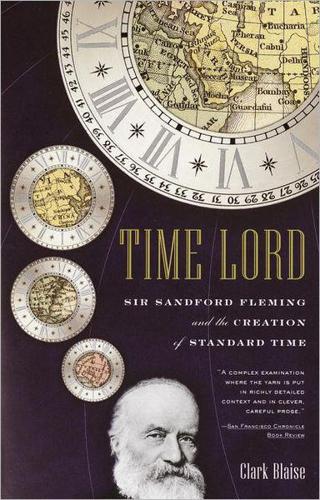
Time Lord: Sir Sandford Fleming and the Creation of Standard Time
by
Clark Blaise
Published 27 Oct 2000
Let Greenwich do her best to maintain her high position in administering to the longitude of the world, and Nautical Almanacs do their best, and we will unite our effort without special acclaim to the fictitious honour of a Prime Meridian. Airy’s conclusion strikes the scornful, above-the-battle stance to which astronomy often aspires. (One need only recall the arguments recorded in Dava Sobel’s Longitude, the contempt of an earlier astronomer-royal, Sir Nevil Meskalyne, for the provincial clock-maker John Harrison.) Airy’s recommendation to the Privy Council was to abstain from any “novelty” or “social usage,” on the principle that government intervention might prove more harmful than the recognized inconveniences enumerated in Fleming’s paper.
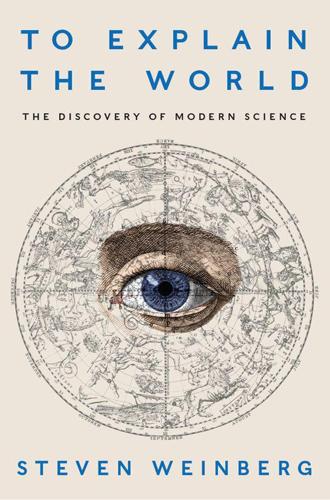
To Explain the World: The Discovery of Modern Science
by
Steven Weinberg
Published 17 Feb 2015
A fuller translation is given in Stillman Drake, Discoveries and Opinions of Galileo (Anchor, New York, 1957), pp. 162–64. 25. A translation of the entire letter is given in Drake, Discoveries and Opinions of Galileo, pp. 175–216. 26. Quoted in Stillman Drake, Galileo (Oxford University Press, Oxford, 1980), p. 64. 27. The letters of Maria Celeste to her father fortunately survive. Many are quoted in Dava Sobel, Galileo’s Daughter (Walker, New York, 1999). Alas, Galileo’s letters to his daughters are lost. 28. See Annibale Fantoli, Galileo—For Copernicanism and for the Church, 2nd ed., trans. G. V. Coyne (University of Notre Dame Press, South Bend, Ind., 1996); Maurice A. Finocchiaro, Retrying Galileo, 1633–1992 (University of California Press, Berkeley and Los Angeles, 2005). 29.
…
George Sarton, Introduction to the History of Science, Volume 1, From Homer to Omar Khayyam (Carnegie Institution of Washington, Washington, D.C., 1927). Erwin Schrödinger, Nature and the Greeks (Cambridge University Press, Cambridge, 1954). Steven Shapin, The Scientific Revolution (University of Chicago Press, Chicago, Ill., 1996). Dava Sobel, Galileo’s Daughter (Walker, New York, 1999). Merlin L. Swartz, Studies in Islam (Oxford University Press, Oxford 1981). N. M. Swerdlow and O. Neugebauer, Mathematical Astronomy in Copernicus’s De Revolutionibus (Springer-Verlag, New York, 1984). R. Taton and C. Wilson, eds., Planetary Astronomy from the Renaissance to the Rise of Astrophysics—Part A: Tycho Brahe to Newton (Cambridge University Press, Cambridge, 1989).
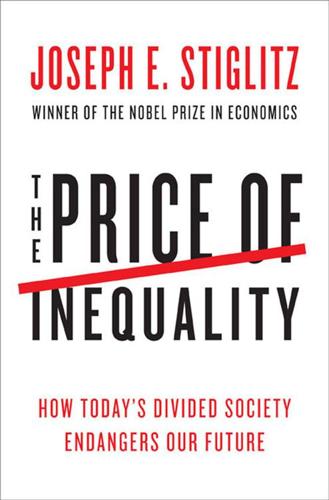
The Price of Inequality: How Today's Divided Society Endangers Our Future
by
Joseph E. Stiglitz
Published 10 Jun 2012
The adverse effects of so-called incentive pay The Right, like many economists, tends to overestimate the benefits and underestimate the costs of incentive pay. There are certainly contexts in which monetary prizes have the potential to focus minds on a thorny problem and deliver a solution. A famous example is detailed in Dava Sobel’s Longitude: The True Story of a Lone Genius Who Solved the Greatest Scientific Problem of His Time. As she reports, in the Longitude Act of 1714, the British Parliament set “a prize equal to a king’s ransom (several million dollars in today’s currency) for a ‘Practicable and Useful’ means of determining longitude.”
…
Hoff, “Market Failures and the Distribution of Wealth: A Perspective from the Economics of Information,” Politics and Society 24, no. 4 (1996): 411–32; and Hoff, “The Second Theorem of the Second Best,” Journal of Public Economics 25 (1994): 223–42. 55. The exciting story is told in the bestseller by Dava Sobel, Longitude: The True Story of a Lone Genius Who Solved the Greatest Scientific Problem of His Time (New York: Walker, 1995). 56. Technically, the problems with incentive pay arise when there are information asymmetries. The employer doesn’t fully know the quality of the products produced by the worker (otherwise, he would specify that).
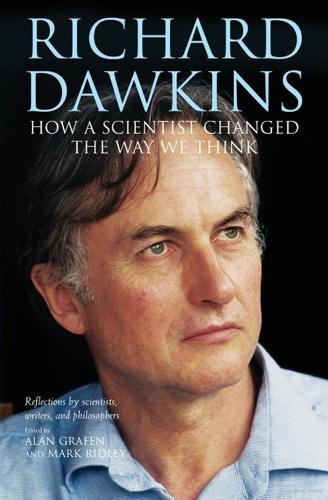
Richard Dawkins: How a Scientist Changed the Way We Think
by
Alan Grafen; Mark Ridley
Published 1 Jan 2006
The deflation began after the debacle of Murray Gell-Mann’s The Quark and the Jaguar (1994), which Brockman sold for an advance of $550,000 for American rights alone. Gell-Mann returned much of the advance after failing to complete the book as promised, though it did eventually come out. The next year the phenomenon was Longitude by Dava Sobel and narrative non-fiction, rather than argument, became all the rage. Cod, tulips, salt, and zero were the themes of the moment, not to mention, on a grander and more analytical scale, guns, germs, and steel. In recent years, even as his imitators swarmed, the master continued to dominate the lists.

Chasing New Horizons: Inside the Epic First Mission to Pluto
by
Alan Stern
and
David Grinspoon
Published 2 May 2018
Then, in 2005, the discovery was reported of a Kuiper Belt planet later named Eris that was thought by its discoverer, Caltech scientist Mike Brown, to be slightly larger than Pluto (later this turned out to be wrong). This in turn resulted in the IAU appointing a planet-definition committee, which included the award-winning science writer Dava Sobel, along with six eminent astronomers. After long deliberations and debates, this august committee proposed a simple and straightforward planet definition: a planet is an object in orbit around any star that is large enough for gravity to make round but not so massive that it ignites in nuclear fusion to become a star.
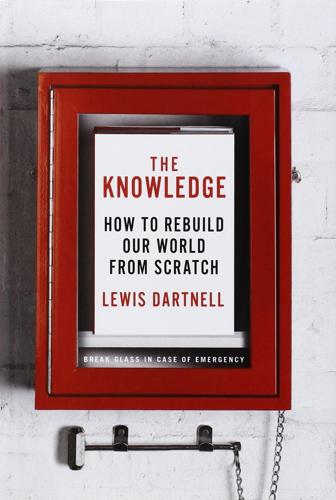
The Knowledge: How to Rebuild Our World From Scratch
by
Lewis Dartnell
Published 15 Apr 2014
nitrogen gas is the least reactive diatomic substance: Schrock (2006). Haber-Bosch process: Standage (2010), Kean (2010), Perkins (1977), Edgerton (2007a). 12: TIME AND PLACE Adam Frank, About Time: Cosmology and Culture at the Twilight of the Big Bang. Eric Bruton, The History of Clocks & Watches. Dava Sobel, Longitude: The True Story of a Lone Genius Who Solved the Greatest Scientific Problem of His Time. Epigraph: Denis Diderot as quoted by Goodman (1995). constancy of sand time (hourglass) compared to water clock: Bruton (2000). sundials: Oleson (2008). Manhattan as a city-size Stonehenge: Astronomy Picture of the Day, July 12, 2006, http://apod.nasa.gov/apod/ap060712.html.
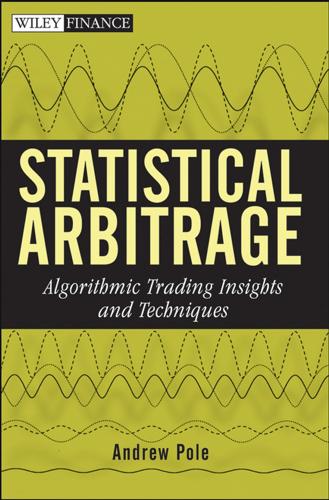
Statistical Arbitrage: Algorithmic Trading Insights and Techniques
by
Andrew Pole
Published 14 Sep 2007
3 The first Astronomer Royal, John Flamsteed (1646–1719), systematically mapped the observable heavens from the newly established Royal Observatory at Greenwich, compiling 30,000 individual observations, each recorded and confirmed over 40 years of dedicated nightly effort. ‘‘The completed star catalogue tripled the number of entries in the sky atlas Tyco Brahe had compiled at Uraniborg in Denmark, and improved the precision of the census by several orders of magnitude.’’ In Longitude by Dava Sobel. Monte Carlo or Bust 7 The questions are unanswerable here. One cannot offer a philosophy or sociology of finance. But one can strive for scientific rigor in data analysis, hypothesis positing, model building, and testing. That rigor is the basis of any belief one can claim for the validity of understanding and coherent actions in exploiting emergent properties of components of the financial emporium.

12 Bytes: How We Got Here. Where We Might Go Next
by
Jeanette Winterson
Published 15 Mar 2021
Susan Sellers, 1994 The Dialectic of Sex: The Case for Feminist Revolution, Shulamith Firestone, 1970 Sapiens: A Brief History of Humankind, Yuval Noah Harari, 2011 Invisible Women: Exposing Data Bias in a World Designed for Men, Caroline Criado Perez, 2019 The I-Ching Testosterone Rex: Myths of Sex, Science, and Society, Cordelia Fine, 2017 (and everything she has written and will write) The Gendered Brain: The New Neuroscience That Shatters the Myth of the Female Brain, Gina Rippon, 2019 The Future Isn’t Female Unlocking the Clubhouse: Women in Computing, Jane Margolis and Allan Fisher, 2002 Programmed Inequality: How Britain Discarded Women Technologists and Lost Its Edge in Computing, Marie Hicks, 2017 Algorithims of Oppression: How Search Engines Reinforce Racism, Safiya Umoja Noble, 2018 The Glass Universe: How the Ladies of the Harvard Observatory Took the Measure of the Stars, Dava Sobel, 2016 Let it Go: My Extraordinary Story – from Refugee to Entrepreneur to Philanthropist, the memoir of Dame Stephanie Shirley, 2012 (If you don’t have time for this, just find her TED Talk.) Uncanny Valley, Anna Wiener, 2020 The Second Sex, Simone de Beauvoir, 1949 Hackers: Heroes of the Computer Revolution, Steven Levy, 1984 Psychology of Crowds, Gustave Le Bon, 1896 Lean In: Women, Work, and the Will to Lead, Sheryl Sandberg, 2013 Difficult Women: A History of Feminism in 11 Fights, Helen Lewis, 2020 A Room of One’s Own, Virginia Woolf, 1929 Your Computer Is on Fire, various editors, 2021 (haven’t read this at time of going to press but looks great) The Blank Slate: The Modern Denial of Human Nature, Steven Pinker, 2002 Of Woman Born: Motherhood as Experience and Institution, Adrienne Rich, 1976 The Better Half: On the Genetic Superiority of Women, Sharon Moalem, 2020 Jurassic Car Park Nineteen Eighty-Four, George Orwell, 1949 The War of the Worlds, H.
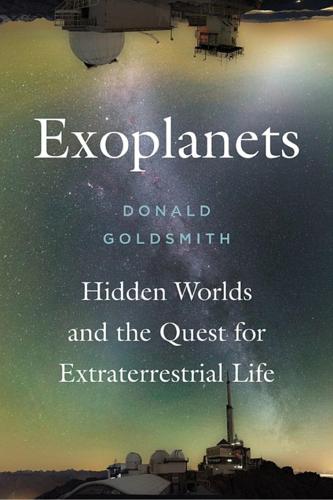
Exoplanets: Hidden Worlds and the Quest for Extraterrestrial Life
by
Donald Goldsmith
Published 9 Sep 2018
,” Astrophysical Journal Letters 396 (1992): L91–94; Artie Hatzes et al., “A Planetary Companion to γ Cephei A,” Astrophysical Journal 599 (2003): 1383–1394. 3. Jacob Berkowitz, “Lost World: How Canada Missed Its Moment of Glory,” Globe and Mail, September 25, 2009, available at https://www.theglobeandmail.com/technology/science/lost-world-how-canada-missed-its-moment-of-glory/article4290133/?page=all. 4. Dava Sobel, A More Perfect Heaven: How Copernicus Revolutionized the Cosmos (New York: Walker & Company, 2011); Konrad Rudnicki, “The Generalized Cosmological Copernican Principle,” available at http://southerncrossreview.org/51/rudnicki4.htm. 5. Data available at http://exoplanet.eu/catalog/hd_20782_b/. 6.
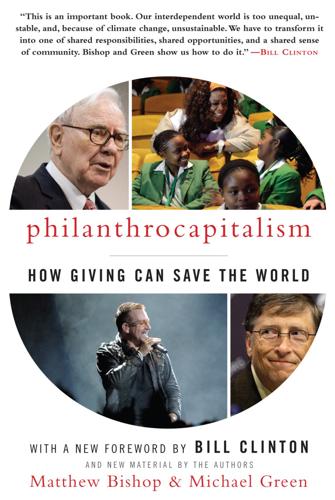
Philanthrocapitalism
by
Matthew Bishop
,
Michael Green
and
Bill Clinton
Published 29 Sep 2008
Prizes to incentivize innovation also have a long history. The race to win a £20,000 prize offered by the British Parliament in the eighteenth century for a solution to how to measure longitude, and the struggle of clockmaker John Harrison to convince the government-appointed panel that he had won, is described in Dava Sobel’s 1995 bestseller, Longitude. Charles Lindbergh flew the Atlantic in 1927 to win a $25,000 prize offered by Raymond Orteig, a hotelier. Now they are back in fashion. The breakthrough moment came when SpaceShipOne won the $10 million X Prize, created by Peter Diamandis, for the first privately funded space flight.
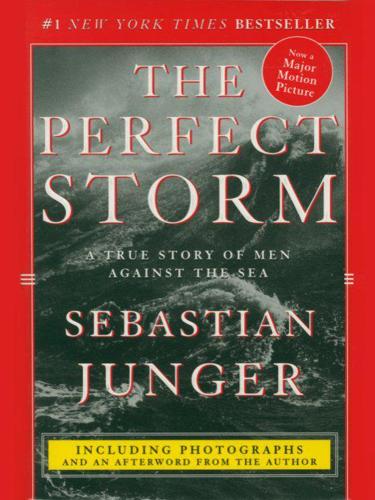
The Perfect Storm: A True Story of Men Against the Sea
by
Sebastian Junger
Published 30 Sep 1999
Like victims of a perfect crime, readers of The Perfect Storm are first seduced into caring for the book's doomed characters, then compelled to watch them carried into the maw of a meteorological hell. And all the while, Sebastian Junger's compassionate, intelligent voice instructs us effortlessly on the sea life of the sword-fisherman, the physics of a sinking steel ship, and the details of death by drowning." —Dava Sobel, author of Longitude "A journalistic triumph, the perfect meeting of the awesome power of a storm at sea and our own fascination with it." —Arizona Republic THE PERFECT STORM A TRUE STORY OF MEN AGAINST THE SEA SEBASTIAN JUNGER Insert credits: Pages 1 (bottom), 2, 3, 4 (bottom), 6, 8 © TEUN VOETEN/HH; pages 4 (top), 5 courtesy of the Crow's Nest; pages 1 (top), 7 courtesy of the Gloucester Daily Times.

How to Speak Money: What the Money People Say--And What It Really Means
by
John Lanchester
Published 5 Oct 2014
This would make a great story for a cute little nonfiction book if the Royal Navy had immediately acted on this information and caused a revolution in scurvy care; in fact, though, it took forty years before the navy made lime juice compulsory on long voyages. (Note that the story of scurvy is a sequel to the story of longitude, as told by Dava Sobel in a book of that name: the ability to determine longitude made it possible for ships to regularly go on much longer voyages, which made scurvy a bigger problem.) costs Everyone knows what costs are. In economics, though, the word is used as a euphemism for “people,” so when a company or government talks about “cutting costs,” what it really means is “sacking people.”
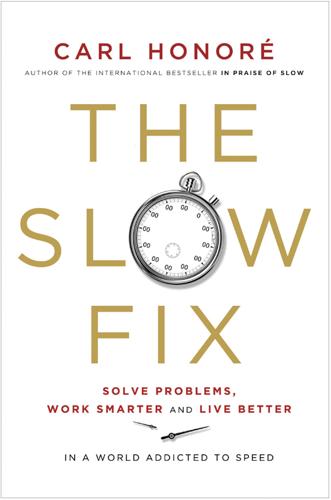
The Slow Fix: Solve Problems, Work Smarter, and Live Better in a World Addicted to Speed
by
Carl Honore
Published 29 Jan 2013
Chapter 9 – Crowdsource: The Wisdom of the Masses Wutbürger as German word of the year: Full list available from German Language Society at http://www.gfds.de/aktionen/wort-des-jahres/ Guessing the weight of an ox: James Surowiecki, The Wisdom of Crowds (New York: Random, 2005), pp. xii-xiii. Pinpointing vessel lost at sea: Surowiecki, The Wisdom of Crowds, pp. xx-xxi. Public identifies Mars craters: Surowiecki, The Wisdom of Crowds, p. 276. Diversity Trumps Ability Theorem: Based on my interview with Scott Page. John Harrison: For the whole story check out Dava Sobel, Longitude: The True Story of a Lone Genius Who Solved the Greatest Scientific Problem of His Time (London: Fourth Estate, 1998). Teenager invents method for detecting pancreatic cancer: Jake Andraka won first place at the 2012 Intel International Science and Engineering Fair (Intel ISEF), a program of the Society for Science and the Public.
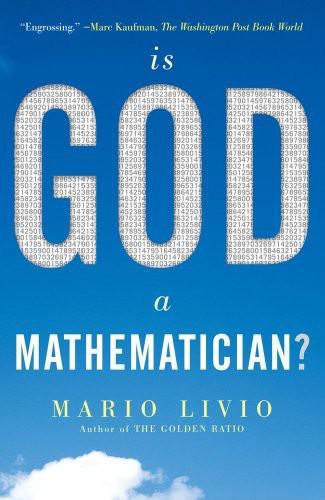
Is God a Mathematician?
by
Mario Livio
Published 6 Jan 2009
Viviani created the popular image: A thorough discussion of Galileo’s methods and thought process can be found in Shea 1972, and in Machamer 1998. “was ignorant not only”: Galileo 1589–92. Galileo profusely criticizes Aristotle in De Motu. See Galilei 1600a, b. Virginia, Livia, and Vincenzio: The life story of Virginia, later known as Sister Maria Celeste, is beautifully told in Dava Sobel’s Galileo’s Daughter (Sobel 1999). “About 10 months ago”: Galilei 1610a, b. An excellent description of the work that led to the telescope can be found in is Reeves 2008. As the historian of science Noel Swerdlow: Swerdlow 1998. For a detailed description of Galileo’s discoveries with the telescope, see Shea 1972, Drake 1990.
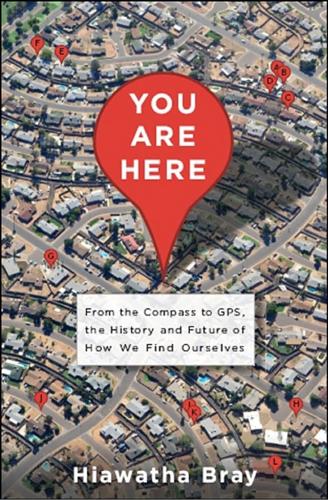
You Are Here: From the Compass to GPS, the History and Future of How We Find Ourselves
by
Hiawatha Bray
Published 31 Mar 2014
Wilford, The Mapmakers, 64. 13. Ibid., 87–104. 14. Andrew D. Lambert, The Gates of Hell: Sir John Franklin’s Tragic Quest for the North West Passage (New Haven, CT: Yale University Press, 2009), 74. 15. Frank Nothen Magill, Magill’s Survey of Science: Earth Science Series (Pasadena, CA: Salem Press, 1990), 2:541. 16. Dava Sobel, Longitude: The True Story of a Lone Genius Who Solved the Greatest Scientific Problem of His Time (New York: Penguin Books, 1995), 24–27. 17. Wilford, The Mapmakers, 132–151. Chapter 2 1. Abigail Foerstner, James Van Allen: The First Eight Billion Miles (Iowa City: University of Iowa Press, 2007), 50. 2.
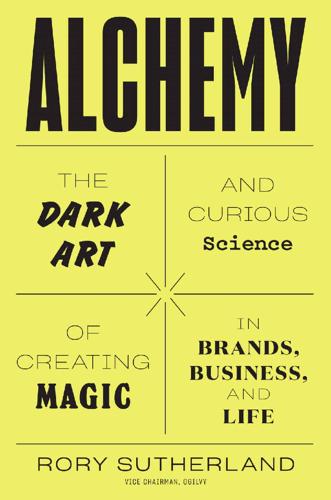
Alchemy: The Dark Art and Curious Science of Creating Magic in Brands, Business, and Life
by
Rory Sutherland
Published 6 May 2019
A 30-minute delay on a one-hour flight is a far greater annoyance than a one-hour delay on a nine-hour flight. *Or the ones who want an excuse to cancel their bloody meeting in Frankfurt. *I will explain how later in this book. *Thirty nautical miles at the equator. *We owe it to Dava Sobel and her bestselling book Longitude (1995) that the name of John Harrison is now widely known. *They had hence proved not only that a heavier-than-air machine could fly, but also that snobbery is not an exclusively British vice. *Semmelweis was even more cruelly treated than Harrison: he died in a lunatic asylum, perhaps having been beaten by the guards, insisting to his last breath that his theory was right.
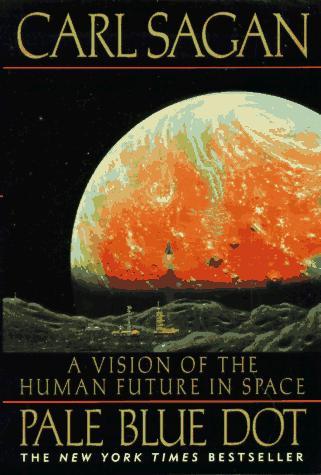
Pale Blue Dot: A Vision of the Human Future in Space
by
Carl Sagan
Published 8 Sep 1997
Bernal, The World, the Flesh, and the Devil (Bloomington, IN: Indiana University Press, 1969; first edition, 1929). James B. Pollack and Carl Sagan, "Planetary Engineering," in J. Lewis and M. Matthews, editors, Near-Earth Resources (Tucson: University of Arizona Press, 1992). 192 CHAPTER 20, DARKNESS Frank Drake and Dava Sobel, Is Anyone Out There? (New York: Delacorte, 1992). Paul Horowitz and Carl Sagan, "Project META: A Five-Year All-Sky Narrowband Radio Search for Extraterrestrial Intelligence," Astrophysical Journal, vol. 415 (1992), pp. 218-235. Thomas R. McDonough, The Search for Extraterrestrial Intelligence (New York: John Wiley and Sons, 1987).

Age of Discovery: Navigating the Risks and Rewards of Our New Renaissance
by
Ian Goldin
and
Chris Kutarna
Published 23 May 2016

Arriving Today: From Factory to Front Door -- Why Everything Has Changed About How and What We Buy
by
Christopher Mims
Published 13 Sep 2021
conscripted into forced labor: Ian Urbina, The Outlaw Ocean: Journeys Across the Last Untamed Frontier (New York: Alfred A. Knopf, 2019). recalled in a video: Jeff Tsang, “WE NEARLY CRASHED! OUR ENGINE BROKE!? A Close Call with Pack of 200+ Ships Outside Shanghai,” YouTube, March 22, 2020, https://www.youtube.com/watch?v=h1-wbV8PkmI. superaccurate marine clocks: Dava Sobel, Longitude: The True Story of a Lone Genius Who Solved the Greatest Scientific Problem of His Time (London: Fourth Estate, 2014). age of the Titanic: “History of Sperry Marine,” Sperry Marine, https://www.sperrymarine.com/corporate-history/sperry-marine. electromechanical device: “‘Metal Mike’ Guides the Queen Elizabeth,” New York Times, September 26, 1946.
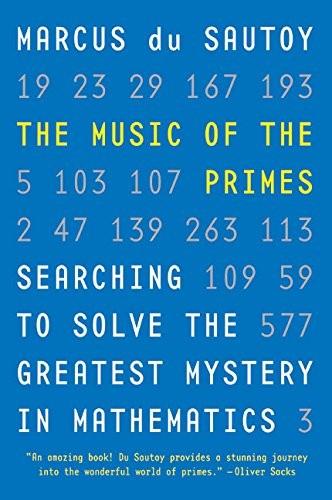
The Music of the Primes
by
Marcus Du Sautoy
Published 26 Apr 2004
http://www.musicoftheprimes.com/ The website for this book contains a regularly updated news section and a huge amount of fascinating information related to prime numbers. BOOKSHOP Now you can buy any of these great paperbacks from Harper Perennial at 10% off recommended retail price. FREE postage and packing in the UK. Fermat’s Last Theorem Simon Singh 1 84115 791 0 £8.99 The Code Book Simon Singh 1 85702 889 9 £9.99 Longitude Dava Sobel 1 85702 5717 £6.99 Isaac Newton James GleickO 00 716318 5 £7.99 Nature via Nurture Matt Ridley 1 84115 746 5 £8.99 The Curious Life of Robert Hooke Lisajardine0007151756 £8.99 Total cost———— 10% discount———— Final total———— To purchase by Visa/Mastercard/Switch simply call08707871724orfaxon08707871725 To pay by cheque, send a copy of this form with a cheque made payable to ‘HarperCollins Publishers’ to: Mail Order Dept (Ref: BOM), HarperCollins Publishers, Westerhill Road, Bishopbriggs, G64 2QT, making sure to include your full name, postal address and phone number.
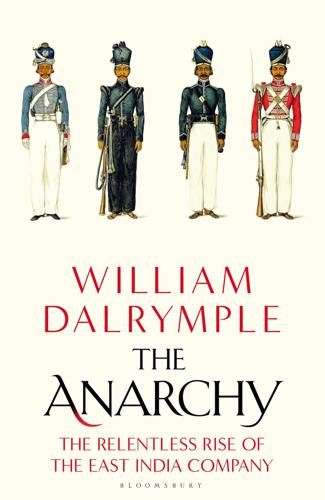
The Anarchy: The Relentless Rise of the East India Company
by
William Dalrymple
Published 9 Sep 2019
* The modern equivalences of these sums are: £1.25 and £2 million = £130 million and £210 million today; £1 million = £105 million; £8 million = £840 million; £3.2 millon = £336 million; £1.1 million = £115 million; £6 million = £630 million. * Over £4 million today. * The Reverend Nevil Maskelyne was, of course, the villain of Dava Sobel’s bestseller Longitude: The Story of a Lone Genius Who Solved the Greatest Scientific Problem of His Time, London, 1995. Here Maskelyne is painted, as one critic put it, as ‘a dull but jealous and snobbish Cambridge-trained cleric, whose elitism and privileging of astronomy over mechanical inventiveness prejudice him against the Yorkshire-born and Lincolnshire-bred [hero of the book, John] Harrison.
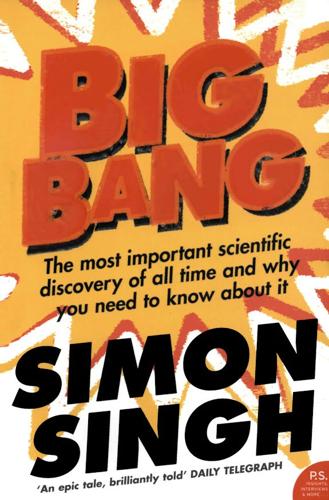
Big Bang
by
Simon Singh
Published 1 Jan 2004
Kitty Ferguson, The Nobleman and His Housedog (Review, 2002) A highly accessible account of the partnership between Tycho Brahe and Johannes Kepler. Martin Gorst, Aeons (Fourth Estate, 2001) A history of humankind’s attempts to measure the age of the universe, from Bishop Ussher to Hubble’s law. Dava Sobel, Galileo’s Daughter (Fourth Estate, 2000) An account of the life of Galileo, which includes letters sent to him by his daughter, who lived in a convent from the age of thirteen. Carl Sagan, Cosmos (Abacus, 1995) The book based on the famous television series, which must have been the inspiration for numerous careers in astronomy.

To Save Everything, Click Here: The Folly of Technological Solutionism
by
Evgeny Morozov
Published 15 Nov 2013
Sol Schwimmer is suing me”: Woody Allen, The Complete Prose of Woody Allen (New York: Wings Books, 1991), 105. 35 “when we think of information technology”: David Edgerton, Shock of the Old: Technology and Global History Since 1900 (London: Profile Books, 2011), xvi. 36 “the most wrenching cultural transformation since the Industrial Revolution”: “‘Antichrist of Silicon Valley,’ Andrew Keen Wary of Online Content Sharing,” Economic Times, May 29, 2012. 37 they don’t always capture the historical complexity: on the longitude problem, see Dava Sobel’s accessible history Longitude: The True Story of a Lone Genius Who Solved the Greatest Scientific Problem of His Time, reprint ed. (New York: Walker & Company, 2007). On early crowdsourcing efforts by the Smithsonian, see “Smithsonian Crowd-sourcing since 1849!,” Smithsonian Institution Archives, April 14, 2011, http://siarchives.si.edu/blog/smithsonian-crowdsourcing-1849.
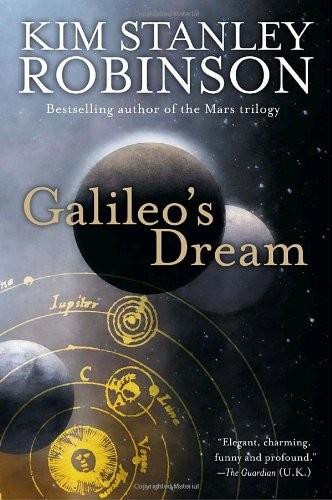
Galileo's Dream
by
Kim Stanley Robinson
Published 29 Dec 2009
I made some changes in these texts, and many elisions that I did not mark, but I was always relying on the translators who translated the source material from Italian or Latin or French into English. In particular I would like to acknowledge and thank Mary Allan-Olney, Mario Biagioli, Henry Crew and Alfonso de-Salvio, Giorgio de Santillana, Stillman Drake, John Joseph Fahie, Ludovico Geymonat, Maurice A. Finocchiaro, Pietro Redondi, James Reston, Jr., Rinaldina Russell, Dava Sobel, and Albert van Helden. Despite the work of these translators and many more, not all of Galileo’s writing has yet been translated into English. This is a real shame, not only for novelists writing novels about him, but for anyone who doesn’t speak Italian but does speak English, and wants to learn more about the history of science, or one of its greatest characters.
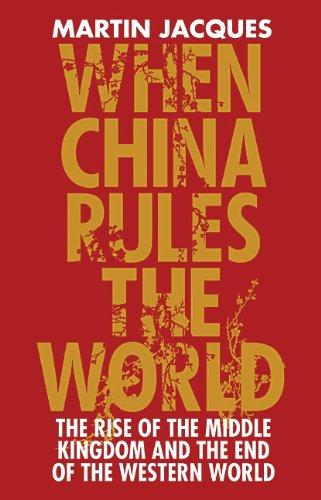
When China Rules the World: The End of the Western World and the Rise of the Middle Kingdom
by
Martin Jacques
Published 12 Nov 2009
Quoted in Chris Alden, China in Africa (London: Zed Books, 2007), p. 19. 14 . Patrick L. Smith, ‘Museum’s Display Links the Birth of Golf to China’, International Herald Tribune, 1 March 2006. 15 . Nicholas D. Kristof, ‘Glory is as Ephemeral as Smoke and Clouds’, International Herald Tribune, 23 May 2005. 16 . Dava Sobel, Longitude (London: Fourth Estate, 1998). 17 . Lucian W. Pye, The Spirit of Chinese Politics (Cambridge, Mass.: Harvard University Press, 1992), p. 235. 18 . Suisheng Zhao, A Nation-State by Construction: Dynamics of Modern Chinese Nationalism (Stanford: Stanford University Press, 2004), pp. 147-9. 19 .
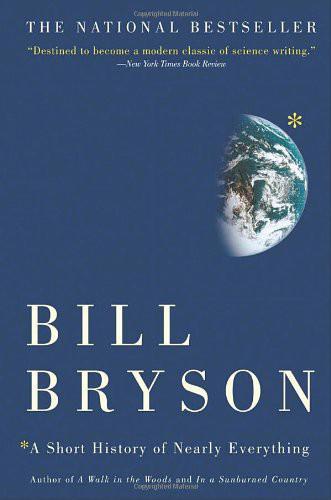
A Short History of Nearly Everything
by
Bill Bryson
Published 5 May 2003
If you measured the deflection accurately and worked out the mass of the mountain, you could calculate the universal gravitational constant—that is, the basic value of gravity, known as G—and along with it the mass of the Earth. Bouguer and La Condamine had tried this on Peru's Mount Chimborazo, but had been defeated by both the technical difficulties and their own squabbling, and so the notion lay dormant for another thirty years until resurrected in England by Nevil Maskelyne, the astronomer royal. In Dava Sobel's popular book Longitude, Maskelyne is presented as a ninny and villain for failing to appreciate the brilliance of the clockmaker John Harrison, and this may be so, but we are indebted to him in other ways not mentioned in her book, not least for his successful scheme to weigh the Earth. Maskelyne realized that the nub of the problem lay with finding a mountain of sufficiently regular shape to judge its mass.
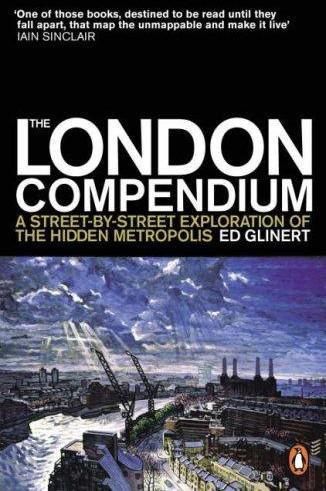
The London Compendium
by
Ed Glinert
Published 30 Jun 2004
Gilbert and George’s studio (1968–), No. 12 The well-known performance artists Gilbert Proesch and Flete George Charles Ernestine Passmore, better known as Gilbert and George, moved to Spitalfields in the late 1960s, when the area was at its lowest ebb and one of the least fashionable enclaves of the capital (‘it was like walking into a book in the nineteenth century: amazing light, and few people in the street, more like literature than reality’, according to Gilbert), but decades later found that their locale had become one of the most fashionable places in central London, thanks to the surrounding gentrification and the influx of artists into Spitalfields and Shoreditch. Nos. 4–6 Built as a silk merchant’s house by Marmaduke Smith in 1726, Nos. 4–6 – used in the late-twentieth-century television version of Dava Sobel’s Longitude – is grander than most of the other properties on the street and features a rusticated central doorway, carved surround, cantilevered canopy and full height Doric pilasters, as well as being decorated internally with much mahogany, used because the duty on the wood had been lifted only four years previously.

The Singularity Is Near: When Humans Transcend Biology
by
Ray Kurzweil
Published 14 Jul 2005
Kardashev, "Transmission of Information by Extraterrestrial Civilizations," Soviet Astronomy 8.2 (1964): 217–20. Summarized in Guillermo A. Lemarchand, "Detectability of Extraterrestrial Technological Activities," SETIQuest 1:1, pp. 3–13, http://www.coseti.org/lemarch1.htm. 68. Frank Drake and Dava Sobel, Is Anyone Out There? (New York: Dell, 1994); Carl Sagan and Frank Drake, "The Search for Extraterrestrial Intelligence," Scientific American (May 1975): 80–89. A Drake-equation calculator can be found at http://www.activemind.com/Mysterious/Topics/SETI/drake_equation.html. 69. Many of the descriptions of the Drake equation express fL as the fraction of the planet's life during which radio transmission takes place, but this should properly be expressed as a fraction of the life of the universe, as we don't really care how long that planet has been around; rather, we care about the duration of the radio transmissions. 70.

The Age of Wonder
by
Richard Holmes
Published 15 Jan 2008
Crowe, Modern Theories of the Universe from Herschel to Hubble, Chicago UP, 1994 Gale Christianson, Edwin Hubble: Mariner of the Nebulae, Farrar, Straus & Giroux, 1995 Peter Whitfield, The Mapping of the Heavens, The British Library, 1995 John Carey (editor), The Faber Book of Science, Faber, 1995 Janet Browne, Charles Darwin: Volume I: Voyaging, and Volume 2: The Power of Place, Pimlico, 1995 and 2000 Michael Shortland and Richard Yeo, Telling Lives in Science: Essays in Scientific Biography, CUP, 1996 Dava Sobel, Longitude, Fourth Estate, 1996 Roy Porter, The Greatest Benefit to Mankind: A Medical History of Humanity from Antiquity to the Present, HarperCollins, 1997 John Gascoigne, Science in the Service of Empire, CUP, 1998 Richard Dawkins, Unweaving the Rainbow: Science, Delusion and the Appetite for Wonder, Allen Lane, Penguin Press, 1998 Lisa Jardine, Ingenious Pursuits: Building the Scientific Revolution, Little, Brown, 1999 Jonathan Bate, The Song of the Earth, Picador, 2000 Ludmilla Jordanova, Defining Features: Scientific and Medical Portraits 1660-2000, National Portrait Gallery, London, 2000 Patricia Fara, Newton: The Making of Genius, Macmillan, 2000 Mary Midgley, Science and Poetry, Routledge, 2001 Thomas Crump, A Brief History of Science as Seen Through the Development of Scientific Instruments, Constable, 2001 Oliver Sacks, Uncle Tungsten: Memories of a Chemical Boyhood, Picador, 2001 Carl Djerassi and Roald Hoffmann, Oxygen (a play in 2 acts), Wiley, New York, 2001 Anne Thwaite, Glimpses of the Wonderful: The Life of P.H.
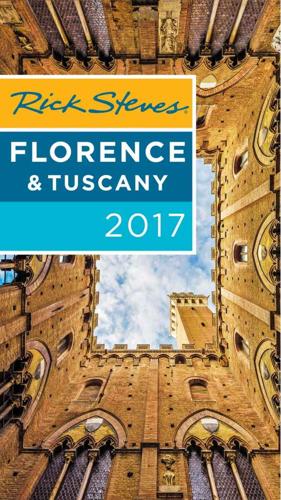
Rick Steves Florence & Tuscany 2017
by
Rick Steves
Published 8 Nov 2016
Boccaccio’s collection of 100 hilarious, often bawdy tales is a masterpiece of Italian literature and inspired Chaucer, Keats, and Shakespeare. Divine Comedy (Dante Alighieri, 1321). Dante’s epic poem—a journey through hell, purgatory, and paradise—is one of the world’s greatest works of literature. Galileo’s Daughter (Dava Sobel, 1999). Sobel’s historical memoir centers on Galileo’s correspondence with his oldest daughter and confidante. The Light in the Piazza (Elizabeth Spencer, 1960). A mother and daughter are intoxicated by the beauty of 1950s Florence (also a 1962 movie and an award-winning Broadway musical). Murder of a Medici Princess (Caroline P.
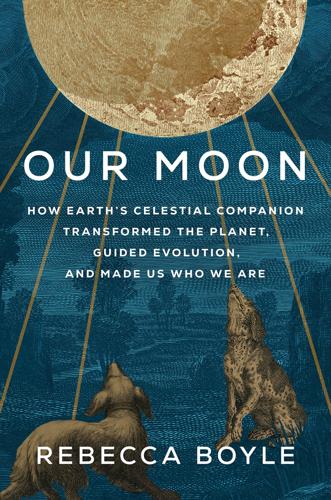
Our Moon: How Earth's Celestial Companion Transformed the Planet, Guided Evolution, and Made Us Who We Are
by
Rebecca Boyle
Published 16 Jan 2024
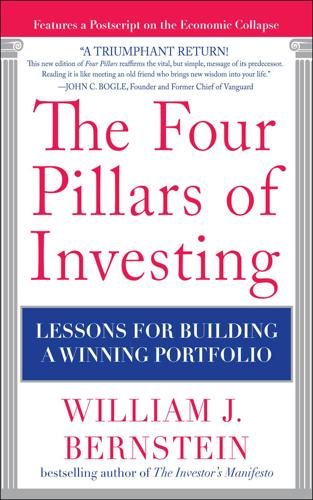
The Four Pillars of Investing: Lessons for Building a Winning Portfolio
by
William J. Bernstein
Published 26 Apr 2002
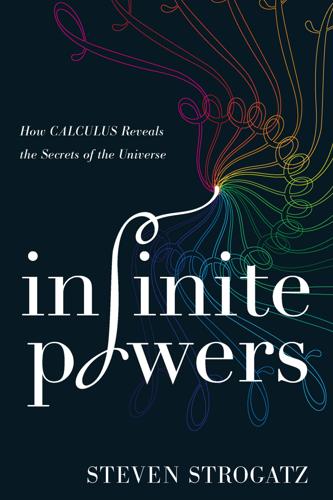
Infinite Powers: How Calculus Reveals the Secrets of the Universe
by
Steven Strogatz
Published 31 Mar 2019
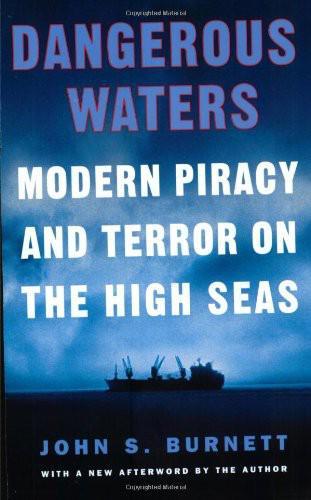
Dangerous Waters: Modern Piracy and Terror on the High Seas
by
John S. Burnett
Published 1 Jan 2002

Bourgeois Dignity: Why Economics Can't Explain the Modern World
by
Deirdre N. McCloskey
Published 15 Nov 2011
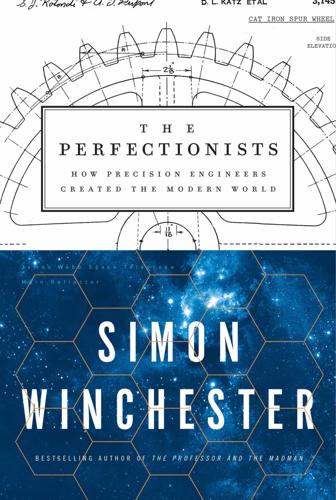
The Perfectionists: How Precision Engineers Created the Modern World
by
Simon Winchester
Published 7 May 2018
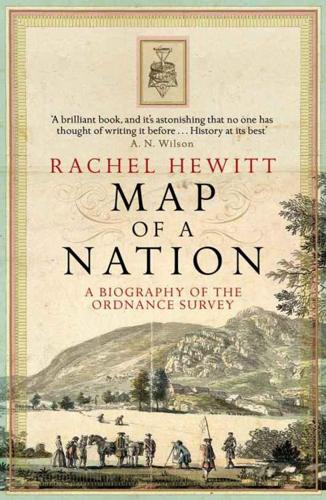
Map of a Nation: A Biography of the Ordnance Survey
by
Rachel Hewitt
Published 6 Jul 2011
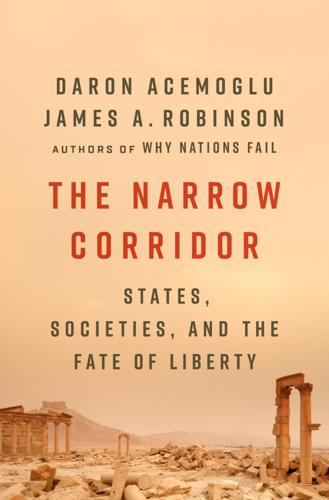
The Narrow Corridor: States, Societies, and the Fate of Liberty
by
Daron Acemoglu
and
James A. Robinson
Published 23 Sep 2019
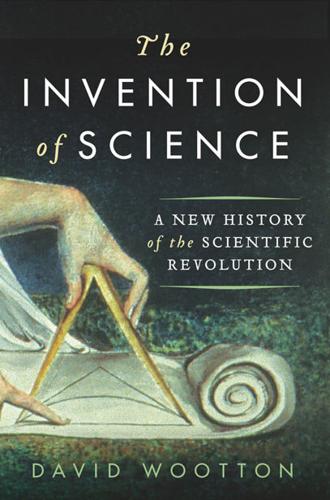
The Invention of Science: A New History of the Scientific Revolution
by
David Wootton
Published 7 Dec 2015